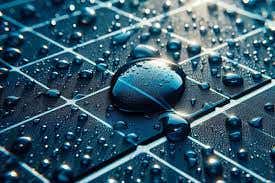NASA solves the mystery of what happened to Mars’ water
NASA’s Hubble and MAVEN missions are shedding light on how Mars lost its water. By studying escaping hydrogen atoms, scientists are unraveling the Red Planet’s watery past.

Clarke and his team have been able to track the current rate at which hydrogen atoms are escaping from Mars’ atmosphere. (CREDIT: CC BY-SA 3.0)
Mars, once a planet teeming with vast amounts of water, is now a dry, desolate landscape. The evidence for this transformation lies in the planet's surface features, which suggest that water once flowed freely. Over the past 3 billion years, some of that water has seeped deep underground.
But what happened to the rest? This question has puzzled scientists for years. Thanks to NASA's Hubble Space Telescope and the Mars Atmosphere and Volatile Evolution (MAVEN) missions, we're now closer than ever to unraveling this mystery.
John Clarke, a researcher at Boston University's Center for Space Physics, leads a team of scientists working to solve this puzzle. According to Clarke, water on Mars had only two potential fates: it could freeze into the ground or its molecules could break apart, with the resulting atoms escaping into space. "To understand how much water there was and what happened to it, we need to understand how the atoms escape into space," Clarke explains.
By analyzing data from Hubble and MAVEN, Clarke and his team have been able to track the current rate at which hydrogen atoms are escaping from Mars' atmosphere. Using this data, they have extrapolated backward to map the planet's water loss over time, offering a clearer picture of what Mars was like during its wetter, warmer past.
How Water Escapes Mars' Atmosphere
On Mars, sunlight breaks apart water molecules in the atmosphere into hydrogen and oxygen atoms. This process, known as photodissociation, releases two types of hydrogen: regular hydrogen and a heavier isotope called deuterium. Deuterium contains a neutron in its nucleus, giving it twice the mass of normal hydrogen. Due to this increased mass, deuterium escapes Mars' atmosphere more slowly than hydrogen.
Related Stories
Over time, more hydrogen escapes than deuterium, leading to a higher ratio of deuterium to hydrogen in the atmosphere. Measuring this ratio allows scientists to estimate how much water was once present on the Red Planet. By studying the current escape rates of these atoms, they can also learn about the processes that have influenced water loss over the last four billion years.
While the MAVEN spacecraft provides most of the data used in this research, it isn't sensitive enough to detect deuterium throughout the entire Martian year. Mars follows an elliptical orbit around the Sun, which means it swings far from the Sun during its long winter.
As a result, deuterium emissions become too faint for MAVEN to measure during this period. To fill in the gaps, Clarke's team turned to Hubble, which has been observing Mars since 1991, well before MAVEN's 2014 arrival. By combining data from both missions, they were able to construct a complete annual cycle of hydrogen and deuterium escape rates for three Martian years, each equivalent to 687 Earth days.
This collaboration between Hubble and MAVEN gave scientists the first comprehensive view of hydrogen atoms escaping into space from Mars. These findings help explain what happened to Mars' water and provide clues about the planet's ancient climate.
A Complex and Changing Atmosphere
Mars’ atmosphere is far more dynamic than previously thought. Clarke notes, "In recent years, scientists have found that Mars has an annual cycle that is much more dynamic than people expected 10 or 15 years ago." The atmosphere heats up and cools down rapidly, sometimes in just a matter of hours. This turbulence is influenced by Mars’ distance from the Sun, which varies by up to 40% over the course of a Martian year.
This new understanding of Mars' atmosphere has led to two major discoveries. First, when the planet is closer to the Sun, water molecules rise through the atmosphere much more rapidly than expected, releasing hydrogen and deuterium at high altitudes. Second, the rapid fluctuations in hydrogen and deuterium escape rates suggest that these atoms need additional energy to escape Mars’ gravity.
At normal atmospheric temperatures, only a small fraction of atoms has enough energy to escape. But when Mars is close to the Sun, the water molecules in its atmosphere absorb energy, which allows more atoms to escape into space. In addition, solar wind protons and sunlight-driven chemical reactions provide extra energy, causing more atoms to break free from Mars’ atmosphere. This explains why the escape rates of hydrogen and deuterium vary so much throughout the Martian year.
Mars as a Proxy for Other Planets
The study of Mars’ water history is critical for understanding not only the Red Planet but also other Earth-sized planets in distant star systems. Astronomers have discovered many such planets, but their distance from Earth makes them difficult to study in detail.
Mars, along with Earth and Venus, resides in or near the "habitable zone" of our solar system, where liquid water could exist. However, each of these planets has evolved under vastly different conditions, providing scientists with natural laboratories for studying how planets in habitable zones can change over time.
By examining Mars' past, scientists hope to gain insights into the conditions that allow liquid water, and potentially life, to exist on distant planets. Clarke’s work, along with the data from Hubble and MAVEN, is helping to piece together the puzzle of water loss on Mars, a crucial step toward understanding the history of water in our solar system and beyond.
These findings were published in Science Advances, a journal by the American Association for the Advancement of Science.
Note: Materials provided above by The Brighter Side of News. Content may be edited for style and length.
Like these kind of feel good stories? Get The Brighter Side of News' newsletter.
Joshua Shavit
Science & Technology Writer | AI and Robotics Reporter
Joshua Shavit is a Los Angeles-based science and technology writer with a passion for exploring the breakthroughs shaping the future. As a contributor to The Brighter Side of News, he focuses on positive and transformative advancements in AI, technology, physics, engineering, robotics and space science. Joshua is currently working towards a Bachelor of Science in Business Administration at the University of California, Berkeley. He combines his academic background with a talent for storytelling, making complex scientific discoveries engaging and accessible. His work highlights the innovators behind the ideas, bringing readers closer to the people driving progress.



